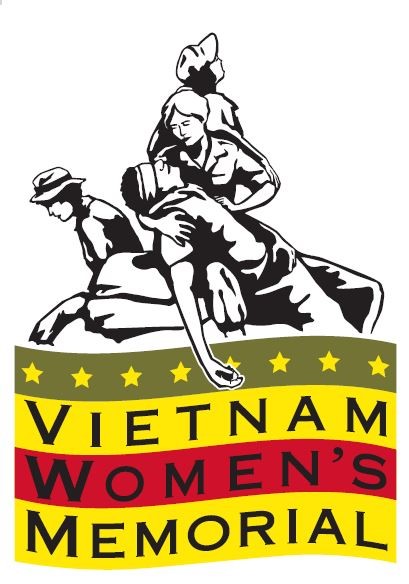
Glenna Goodacre
Sculptor of the Vietnam Women's Memorial
Glenna Goodacre, sculptor of the Vietnam Women’s Memorial, is internationally renowned for her work in bronze. She has won numerous awards and honors for her work and is one of a small number of independent artists to have her artwork minted on a U.S. circulated coin (the gold-colored Sacagawea dollar coin issued in 2000).
Nov. 11, 2003 “My desire to create a lasting tribute to the American women serving in Vietnam is founded upon my deep respect for each of them, and my heartfelt payer for their “healing and hope.” I have been humbled by the enormity of such a task yet incredibly honored by the
overwhelming gratitude of the veterans. The emphasis of this tribute is centered on their emotions: their compassion, their anxiety, their fatigue, and above all, their dedication. My first concern in designing this sculpture was to arrange the four figures in a composition that is interesting from all angles: a true sculpture in the round. The photos from Vietnam often included stacks of sandbags. It seemed natural for a nurse – in a moment of crisis – to be supported by sandbags as she serves as the life support for a wounded soldier lying across her lap. The standing woman looks up, in search of a med-i-vac helicopter or, perhaps, in search of help from God.
The kneeling figure has been called “the heart and soul” of the piece because so many vets see themselves in her.She stares at any empty helmet, her posture reflecting her despair, frustrations, and all the horrors of war. The soldier’s face is half-covered by a bandage, creating an anonymous figure with which veterans can identify. Even though he is wounded, he will live. I want this to be a monument for the living.
That my hands can shape the clay which might touch the hearts and heal the wounds of those who served fills me with humility and deep satisfaction. I can only hope that future generations who view the sculpture will stand in tribute to these women who served during the Vietnam era.”
![]()
Glenna Goodacre
Sculptor
For more information about the Memorial, its dedication, and the women who served during Vietnam, read “Celebration of Patriotism and Courage: Dedication of the Vietnam Women’s Memorial”.

George Dickie
Architect of the Vietnam Women's Memorial
George Dickie, AIA ASLA, the landscape architect of the Vietnam Women’s Memorial, is a professor of architecture at Penn State University.
“From the inception of the design process it was important to establish and understand the setting of the Wall and other memorials in the park.
The challenge of site selection followed congressional approval to locate the memorial in “area A”, as this section of the Constitution Gardens is designated by the National Park Service.
In researching the design records of the Wall, a defined site boundary of the Wall “site” could not be found. The competition guidelines had prescribed an approximately two-acre area within which the Wall could be located.
Establishing this area was the first task. Further on-site investigations determined that the space surrounding the Wall that could be defined as the “genus loci” of the Wall was in fact closer to six acres in size. Six sites were examined as suitable for the Vietnam Women’s Memorial, each adjacent to but outside the area of context of the Wall. Important in the site selection were three additional factors: (1) that the new Memorial would be set in a location from which the wall could be seen; (2) that there would be easy access to the new site; and (3) that the placement would relate to the design of the park and complement the original design concept of Constitution Gardens.
The design concept builds upon the criteria used in the site selection process, in addition to the realization that the Memorials are experiencing far greater number of visitors than had been previously anticipated.
The sculpture by Glenna Goodacre is the single most important force in the design of the landscape setting. The composition of the sculpture involves the viewer in a series of successive views. The visitor is drawn by the composition to move around the sculpture and to determine a personal perception of the composition from many different points. This need to involve the viewer in a kinetic relationship to the statue led to the design of a terrace that, while being functionally adequate for viewing, would also provide space for seating.
The material used for the paving is a Carnelaian red granite from Minnesota. The terrace is approached from the main walkway leading to the Wall and the statue of three fighting men. A single entrance leads to the sculpture and gives visitors views of the Wall as they exit.
The rectangular shape of the terrace and the indents for seating and viewing create a counterpoint to the movement of the visitor and to the circle of trees that form the space within the park. The trees provide transparent walls to the terrace and will give shade and comfort in the summer. The trees selected, Yellowood, have a delicate branching form; the leaves are light green in summer and a subtle yellow in fall. Other plant materials are Viburnum and Shadblow. The ground cover surrounding the terrace is an evergreen variety of Cotoncaster.
![]()
George Dickie, AIA ASLA
Landscape Architect
